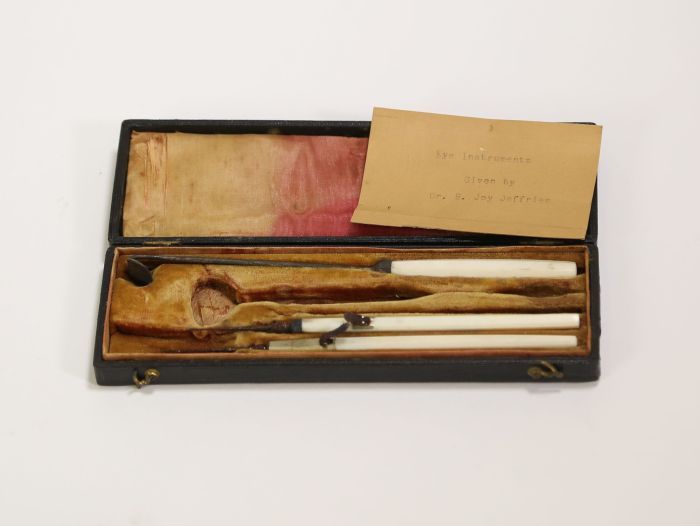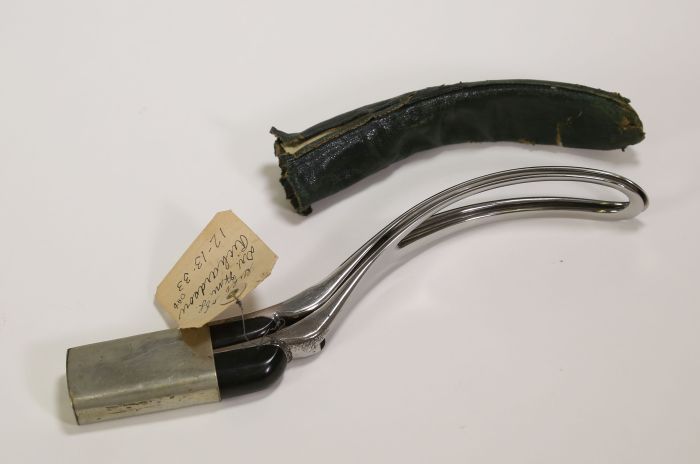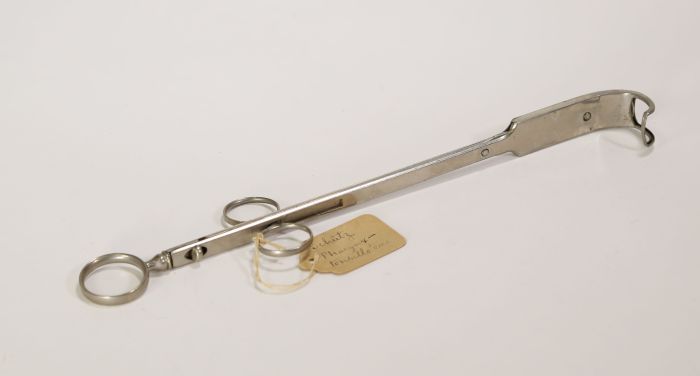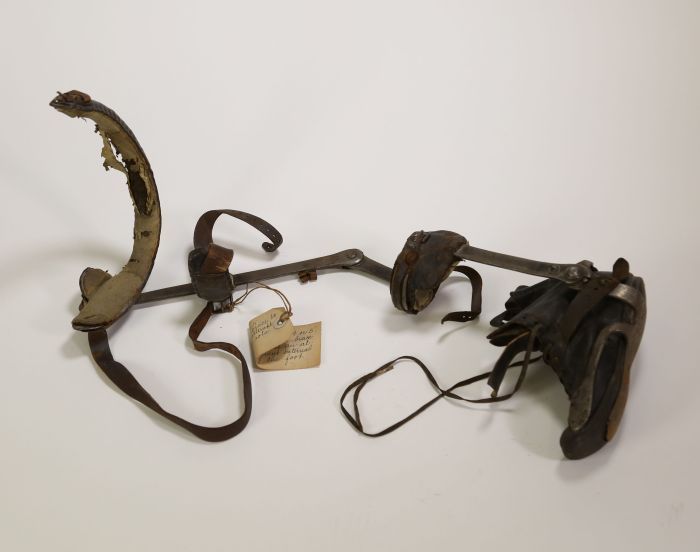Emerging Specialties
While individual physicians have always had areas of expertise, the system of specialized medicine that we are familiar with today formed during the 19th century. Many instruments from the early stages of medical specialization were found in this collection, painting a picture of the many types of doctors that were active at this time.
These included tools from the fields of ophthalmology, otolaryngology (commonly referred to as "ear, nose, and throat"), orthopedics, pharmaceuticals and homeopathy, and OBGYN equipment. As time went on, instruments evolved and medical specialties were added. There were a few of these later additions present in the collection as well, including nephrology and plastic surgery.
The formal specialty of ophthalmology began in the early 19th century. Until then, many eye operations and research into the diseases of the eye were done by oculists, who did not have residency training. One of the largest impacts in the field of ophthalmology was the invention of the ophthalmoscope in 1851, which allowed practitioners to examine the retina.
The case pictured here shows a typical set of 19th-century ophthalmic surgery tools. Sets like these would be used to perform operations on the eyelids and lacrimal ducts, and in surgeries to correct strabismus.
Up until the 18th century, childbirth was typically something guided by female relatives or a midwife. A doctor only became involved if there was a serious medical problem. The invention of the obstetric forceps played a role in the medicalization of childbirth. Before the common use of forceps, obstructed labor usually resulted in the death of either the mother or the infant. Doctors could use forceps in the cases to help adjust the infant's position in the birth canal. This became common practice for almost two centuries, until cesarian sections became a safe procedure.
Obstetric forceps were so widely used that they were constantly being redesigned and improved upon. This set could be taken apart for easier storage and transportation.
Otorhinolaryngology—frequently shortened to "otolaryngology", and more commonly referred to as "ear, nose, and throat" or "ENT"—began as a specialty in the early 19th century. Many of the systems in the head and neck are interconnected, resulting in the formation of the specialty. Otolaryngologists perform a wide range of surgeries.
One of the most frequent surgeries for a 19th-century otolaryngologist was the tonsillectomy. There were many different tools for this procedure, and the tonsillotome was one of the most commonly used.
Homeopathy was developed in the late 18th-century by the German physician Samuel Hahnemann. Hahnemann founded homeopathy on the concept of "like cures like" and used heavily diluted doses of toxins to treat the symptoms those toxins would create in larger quantities. However, Hahnemann's preparations were diluted to an extent that it was implausible any molecules of the original substance remained in the preparation.
Homeopathy was introduced in the United States in 1825 by Hahnemann's student Hans Birch Gram. Homeopathic schools opened in the US soon after. Due to the dangerous nature of so many 19th-century medical treatments, homeopathic treatments—which could not cure the patient, but could not harm them—became extremely popular. There were many contemporary critics of homeopathy, including Harvard Medical School Dean Oliver Wendell Holmes.
Orthopedics is a medical field that focused on the preservation and restoration of the function of the skeletal system. The term "orthopedics" comes from Nicolas André, who published the book L’Orthopédie on the correction of musculoskeletal deformities in children in 1741. Orthopedics was originally a field focused on children, and many orthopedic practitioners came to the field through work with children. As more was learned about the musculoskeletal system in the 19th century, the field grew from primarily braces and splints to include multiple orthopedic surgeries, including the surgical correction of clubfoot. Many orthopedic training centers were opened during World War I, and the field has since expanded to include treatment of traumatic injuries, congenital malformations, and degenerative diseases in people of all ages.
The brace shown here belonged to Lloyd T. Brown, and was used to treat his club foot during childhood. Brown grew up to become an orthopedic surgeon.





